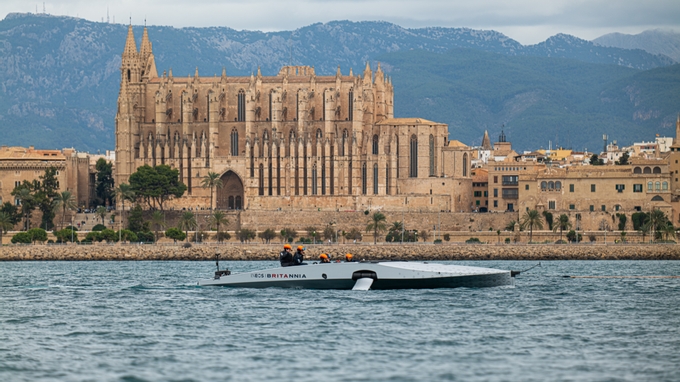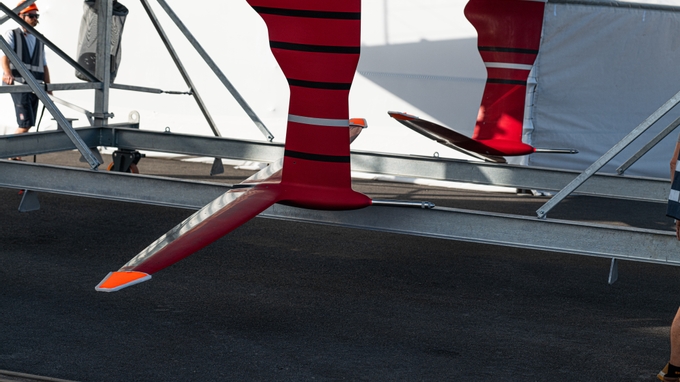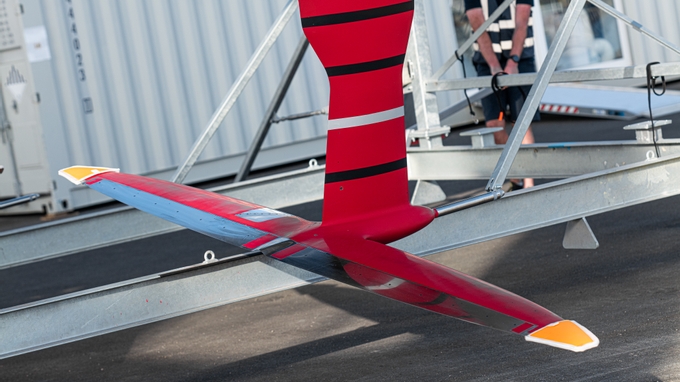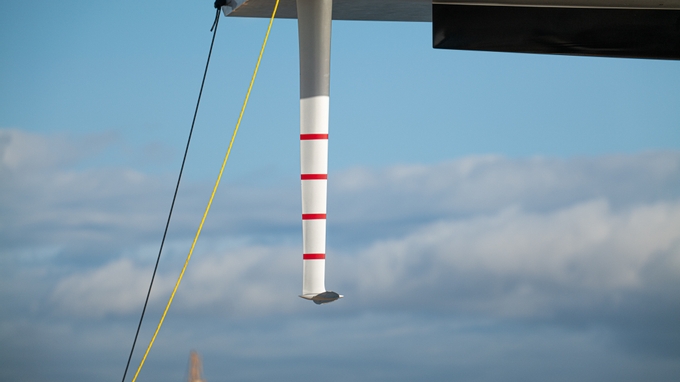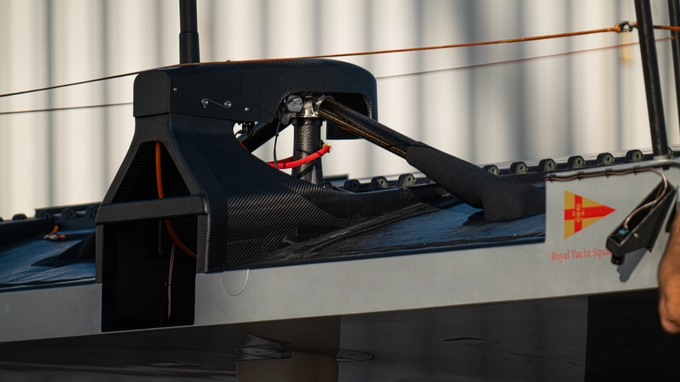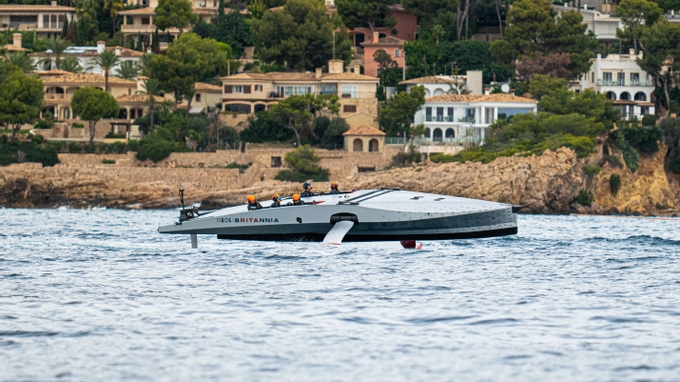INEOS BRITANNIA SHAKEDOWN
The final piece of the 37th America’s Cup training jigsaw fell into place today with the initial launch and tow-test shakedown of the INEOS Britannia LEQ12, ‘T6’, out in the harbour at Mallorca. Looking radical and angular, the steel grey hull replete with sponsor logos, almost blended into the sea with a low freeboard accentuated by the wave-piercing bow as the British team tentatively took to the water for a first outing, shorn of the rig or the tow-rig that we saw at the christening ceremony a few weeks back.
The sailors certainly all looked highly engaged to be on the water and with a first-class shore and RIB team, the launch process was super smooth, and the towing went to plan. “It was really a shake-down tow-testing day for us, systems checks of a lot of different areas: chase boat comms, data links and then some of the systems on the yacht itself,” commented a clearly delighted Giles Scott who is Head of Sailing now for INEOS Britannia.
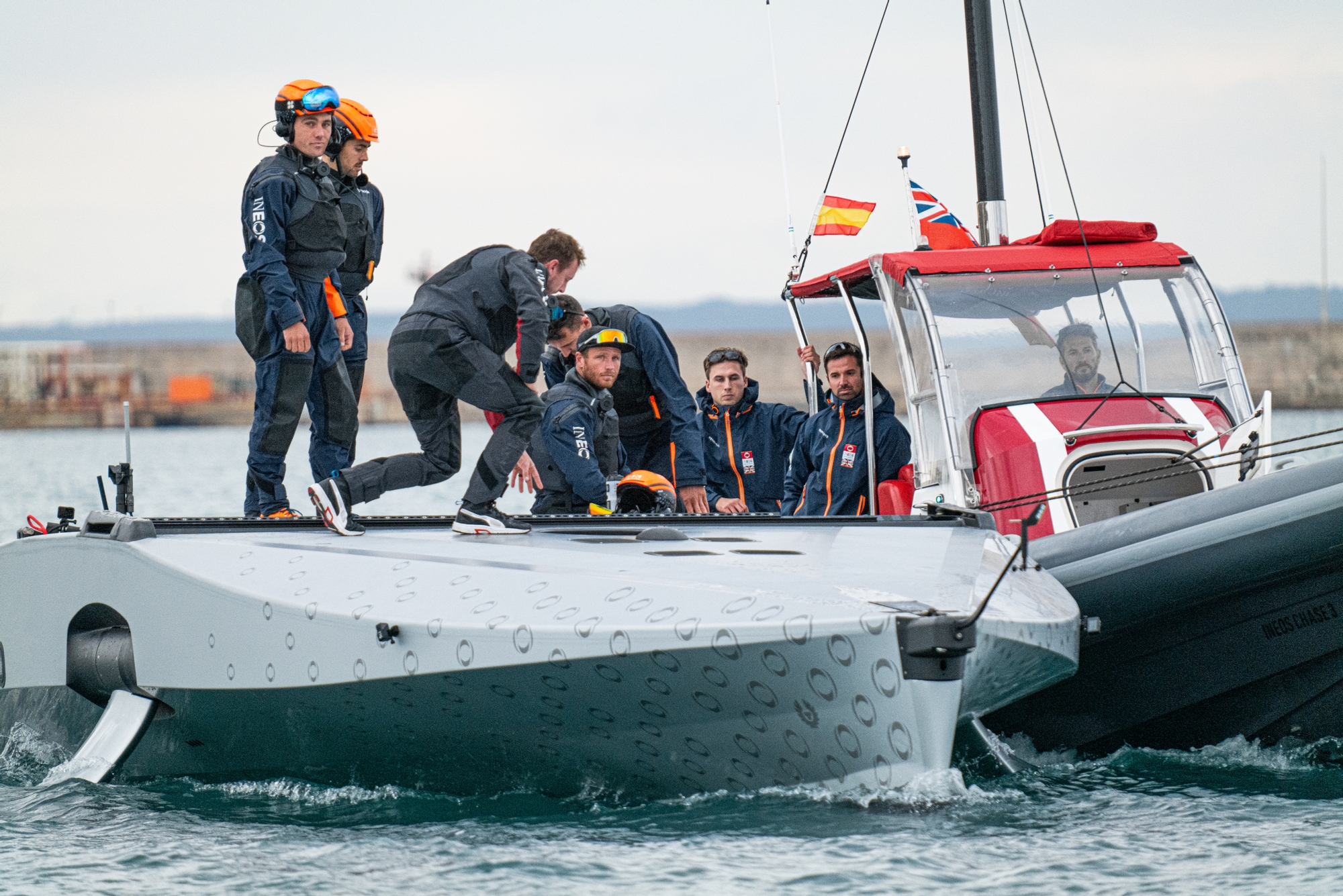
Interestingly Scott, who was running the day in the absence of Sir Ben Ainslie, alluded to the technical nature of this ultimate testing platform saying: “For sure the testing is a focal part of the early section of the testing with T6, so with that, really what the designers want out of the boat is nice steady data.” And he went on: “There was an awful lot of de-bugging going on, so we had some of the hydro and electronic guys and a lot of the guys that are dialled into the yacht both ashore and back at Brackley (the Mercedes-AMG F1 Applied Science HQ in the UK) looking into the various parts of the yacht.”
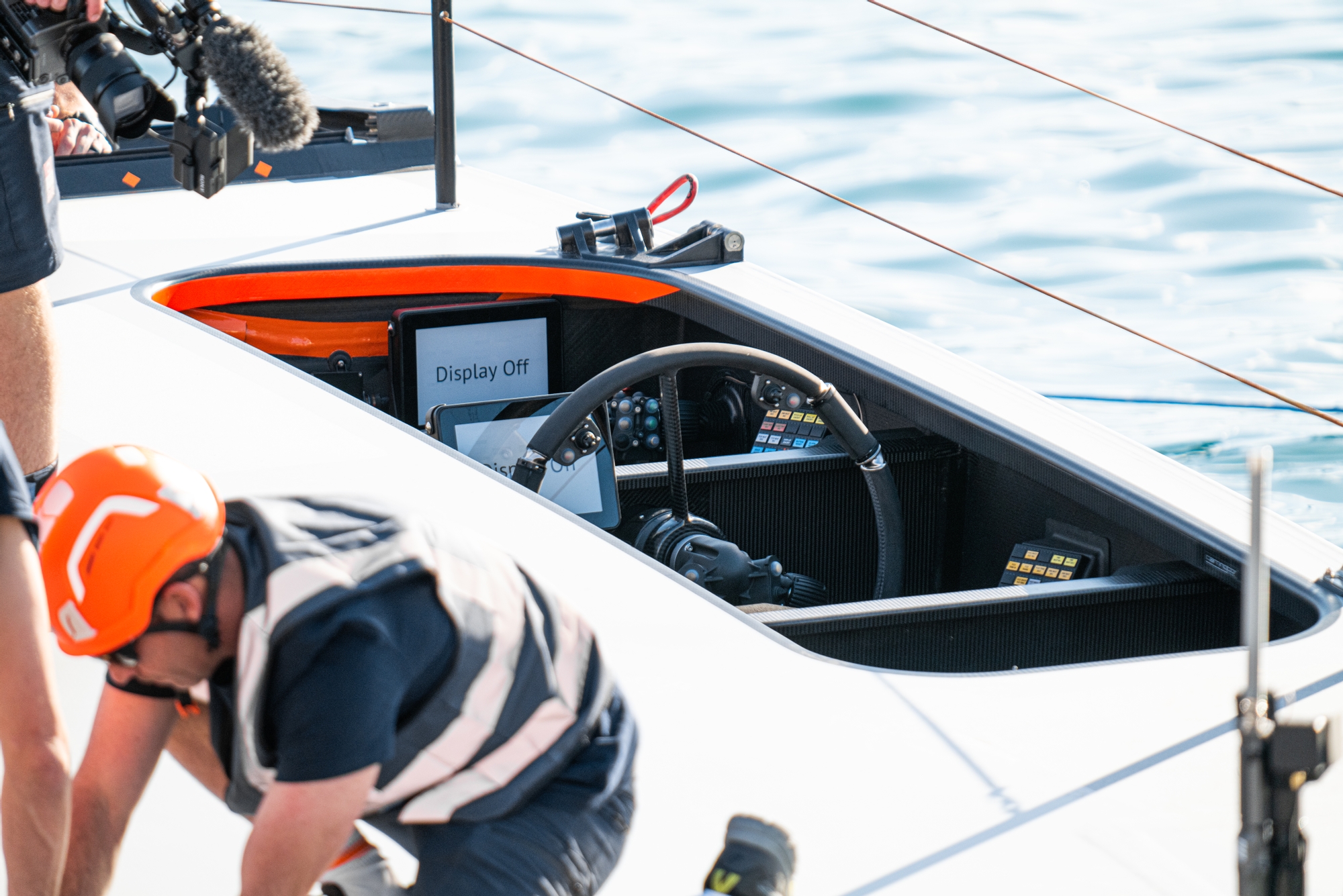
INEOS Britannia have made no secret of the fact that T6 is a highly technical testing platform, initiated to validate the tools and software that the design team will be using to confirm the final configuration of their one-build AC75 for use in Barcelona at the America’s Cup in 2024. And with the not inconsiderable design might and technological know-how of the Mercedes-AMG F1 Applied Science team literally wired into the boat with live data being transmitted back to the UK for analysis, this is a programme with efficiency and clinical technical validation stamped all over it. As a baseline for moving forward it is highly impressive and over the coming weeks we will see a lot more tow-testing from the British than any other team to date, before they step the rig and actually get sailing.
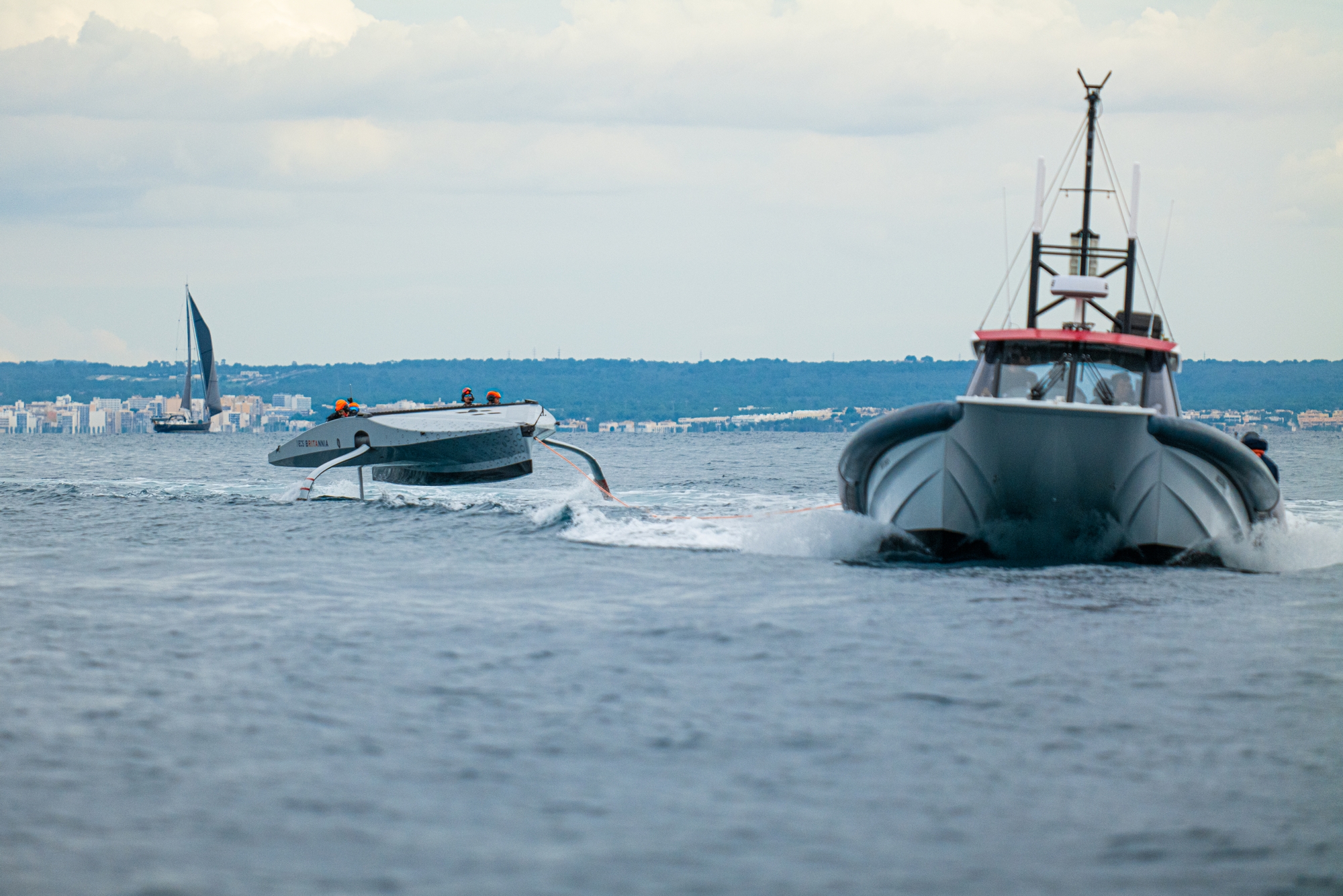
In total, INEOS Britannia did four foiling runs under tow today in almost perfect conditions in the afternoon with the wind dying off to less than 5 knots. Ben Cornish and Giles Scott shared the alternate trench steering positions whilst Luke Parkinson and Bleddyn Mon handled the flight controls and systems checks – they certainly looked very much on their ‘A-Game’ with assured flight and a lot of boxes ticked off on a very rewarding session.
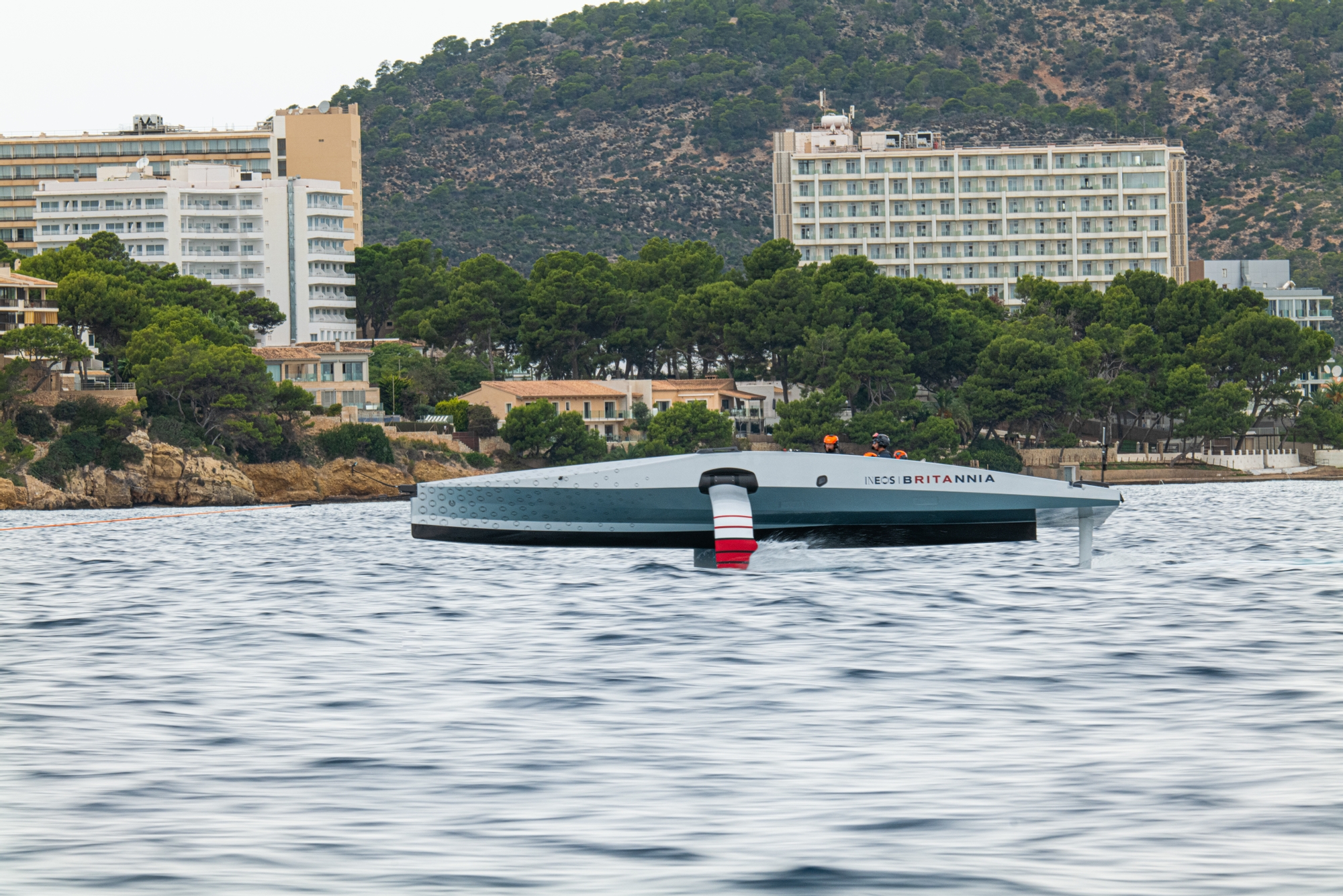
As Giles Scott said afterwards: “It’s good to get the boat out of the shed, get it out on the water and do a bit of foiling. It’s a really positive day for the team. There’s been a lot of hard work going in to getting T6 up and running and for sure today is a good step in the direction we want to push it along.”
Mallorca, the winter training base for INEOS Britannia, looks like being an excellent option for the team with good and variable conditions plus the added bonus of some incredible bike trails up in the hills in this Mecca for cyclists/cyclors, but with the northern hemisphere winter fast approaching, and a super-low freeboard on T6, it was no surprise to see the team breaking out the branded drysuits – these boats are wet even under tow! (Magnus Wheatley)

On-Water Recon Unit Notes: INEOS Britannia’s first day on the water was restricted to tow testing without the use of the tow mast setup that the team had rigged ashore on their previous recon day on October 27. The British LEQ12 T6 was wheeled out of the INEOS Britannia hangar at 0945 this morning in warm sunshine around 21C with clear skies and light winds.
The shore crew wasted no time in hooking the silver hulled test boat up to the crane and by 1010 it was in the water alongside one of the team’s three chase boats.
Four sets of what we were told were battery packs were craned aboard the two chase boats – three on one, one on another. Dock out was originally scheduled for 1100 but after what appeared to be a technical issue down below on T6 this was pushed back to shortly after 1130. T6 left the dock on a side tow but a few minutes later was transferred to a shortish – maybe 50-foot (15 metre) – bow tow. Onboard were helmsmen Giles Scott and Ben Cornish as well as flight Luke Parkinson and Bleddyn Mon – as well as T6 boat captain Chris Schirmer.
Once outside the confines of Palma’s Port a second transfer was made to the larger of the two team chase boats with a considerably longer tow line being deployed. Outside the port the wind was light – no more than eight knots from the northwest – but there was also a significant swell of about a metre and a half outside the port which was left over from several days of strong winds in the Bay of Palma recently.
After a long tow across the Bay to the flatter waters off the beach at Magaluf the team made their run at speed at 1240 quickly accelerating from eight knots up to around 18 knots when the boat took assuredly to the air. Top speed on the around three-minute run was an estimated 18 knots. The second run began at 1250, lasted a similar time, and resulted in almost estimated identical take off and top speeds. Run number three, shortly after, lasted almost seven minutes, when after taking off at 17 knots, T6 hit an estimated top speed of 20 knots. What appeared to be an attempt at a fourth run saw T6 pop up high on to the foils and down again three or four times before the run was ultimately abandoned.
After a gap of around 45 minutes during which people with bags – maybe tools, maybe laptops – got onto the boat from a support rib on two occasions – a fifth speed run began. This, however, lasted only two minutes with the boat coming up on the foils at an estimated 16 knots but not noticeably accelerating afterwards. Another hour of downtime – during which several people disappeared down the front hatch – ended with a long tow home with the boat arriving back at the base at 1545.
Dock-Out: 1134 Dock-In: 1545
Wind Strength: 8 knots (AM) Sub 5 Knots (PM)
Foil Flight Speed: 16-18 knots (approximation)
Helms: Giles Scott / Ben Cornish
Flight Control: Luke Parkinson / Bleddyn Mon
Boat Captain Chris Schirmer also onboard
